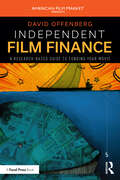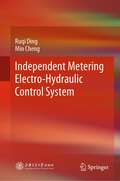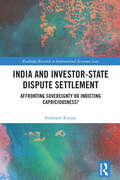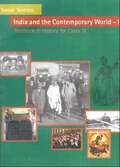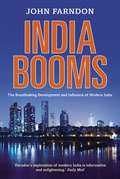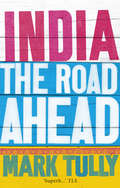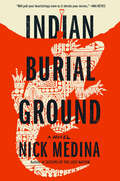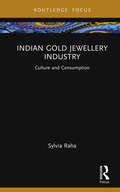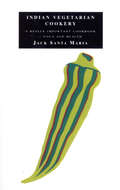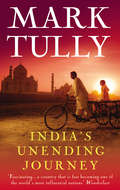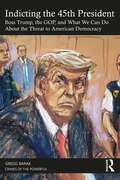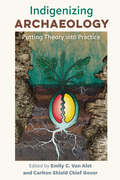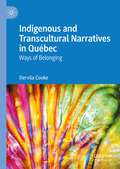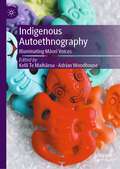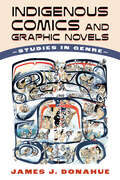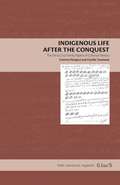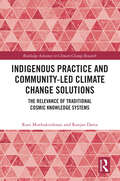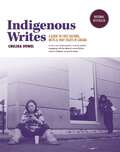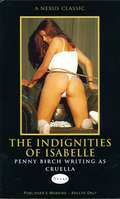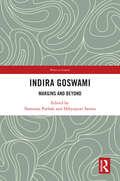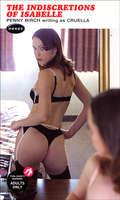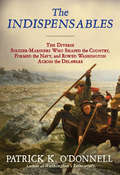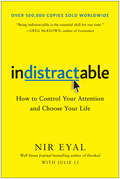- Table View
- List View
Independent Film Finance: A Research-Based Guide to Funding Your Movie (ISSN)
by David OffenbergFor aspiring producers and directors who need to learn film finance from the ground up, this revolutionary new book teaches the fundamentals, through the voices of more than 60 successful independent producers. Using a research and data-based approach, award-winning professor David Offenberg combines the wisdom of well-known and successful producers into one fun, easy-to-follow guide.Within, readers will learn how to talk to potential investors and what those financiers will expect from them in return. The book is also packed with informative anecdotes and examples to enrich each chapter and contextualize the film financing landscape. As the book progresses, equity, debt, revenue, profits, and their role in your movie will be explored. Accessible information about tax incentives and profit participations is included to help emerging filmmakers build out a workable financing plan. The book combines hard numbers and data sets, with direct guidance from successful producers, to construct a holistic overview on how you can turn your new-found financial knowledge into funding for your movie.This ground-breaking book is a must-read for any aspiring producer or director who wishes to gain an informed and easily digestible understanding of film finance.
Independent Metering Electro-Hydraulic Control System
by Ruqi Ding Min ChengThis book shows an independent metering electro-hydraulic control system involving its flexible hardware layouts, complex software control, representative products and applications. The book includes one chapter introducing the background and motivation of the independent metering electro-hydraulic control system. It also includes one chapter to summarize various hardware layouts involving the utilized hydraulic components and circuits, as well as analyze their advantages and disadvantages. It emphatically consists of four chapters demonstrating the detailed multivariable control strategies from three levels: load, valve and pump, together with fault-tolerant control under the fault condition. It includes a last chapter, in which products of independent metering control valve and their applications in some typical heavy-duty mobile machinery are collective works of reviews illustrative of recent advances. This book is interesting and useful to a wide readership in the various fields of fluid power transmission and control.
India and Investor-State Dispute Settlement: Affronting Sovereignty or Indicting Capriciousness? (Routledge Research in International Economic Law)
by Prabhash RanjanPrabhash Ranjan explores the two competing narratives of investor-state dispute settlement (ISDS) and focuses on the six ISDS cases India lost. On the one hand, ISDS is chastised for affronting the State’s sovereign regulatory power – the Philip Morris narrative. On the other hand, ISDS allows investors to hold States accountable for abuse of public power – the Yukos narrative. This book argues that India’s ISDS story resembles the Yukos narrative.With a focus on six case studies, this book examines the reasons that led to foreign investors suing India and the following developments. These ISDS claims are divided into four categories: a case arising from judicial actions, claims brought because of the cancellation of a contract to lease spectrum, conflicts resulting from the imposition of retroactive taxes, and disputes arising from the actions of sub-national governments. Based on India’s recent treaty practice, the book also contends that India is de-legalizing and de-judicializing international investment law. By telling India’s ISDS story, the book drives home the point that rectifying the ISDS system's flaws requires both narratives' centrality. Excessive focus on the Philip Morris narrative will replace the existing imbalances with a new one where the scale tilts towards the States to the detriment of foreign investment.This is a useful reference for scholars and practitioners interested in ISDS and its implications for India.
India and the Contemporary World-1 class 9 - NCERT - 23
by National Council of Educational Research and Training"India and the Contemporary World - I" is a textbook designed for Class 9 students by NCERT (National Council of Educational Research and Training) in India. It is a part of the Social Science curriculum and focuses on the history of India in the modern era, covering the period from the late 18th century to the mid-20th century. The textbook explores various themes and events that shaped India during this time, including the impact of British colonial rule, the rise of nationalism, the struggle for independence, and significant socio-economic changes. It also examines global events and their influence on India's history, such as the Industrial Revolution, World War I, and World War II. Through engaging narratives, primary sources, and illustrations, the textbook aims to provide students with a comprehensive understanding of India's historical journey and its relevance to the contemporary world.
India Booms: The Breathtaking Development and Influence of Modern India
by John FarndonThe ancient birthplace of some of the world's major religions and now a modern nuclear power, India is experiencing spectacular economic growth. In twenty-five years its population will overtake that of China, making it one of the most populous and rapidly-developing countries in the world. We all need to know more about this intriguing country.John Farndon explores the changing face of modern-day India and its fundamental contradictions. The country is leading the world in cutting edge technology and research, but it is also home to 40 per cent of the world's malnourished children. It is a liberal democracy, yet its political processes are influenced by some of the most conservative religious ideas in the world. The booming economy is at times both global and archaic. Getting to the heart of these inconsistencies, Farndon gives a fascinating insight into the country as it is now and as it will be in the future, and reveals how the changes in India will affect us all.
India: the road ahead
by Mark TullySince the Indian economy was liberated from bureaucratic, socialist controls in 1991, it has developed rapidly. A country once renowned for the backwardness of its industries, its commerce and its financial market is now viewed as potentially one of the major world economies of the twenty-first century. But there are many questions which need to be asked about the sustainability of this rapid economic growth and its effect on the stability of the country. Have the changes had any impact on the poor and marginalised? Can India's democracy contain the mounting resentment of those left out of the new economic order? Can a high growth rate be sustained with India's notoriously corrupt and inefficient governance? Can the development of its creaking infrastructure be speeded up? How is India going to feed itself unless agriculture is reformed?This timely book will answer these questions through interviews with industrialists and cricketers, God men and farmers, plutocrats and former untouchables. Full of fascinating stories of real people at a time of great change, it will be of interest to economists, business people, diplomats, politicians, as well as to those who love to travel and who take an interest in the rapid growth of one of the world's largest countries, and what this means to us in the West.
Indian Burial Ground
by Nick MedinaA man lunges in front of a car. An elderly woman silently drowns herself. A corpse sits up in its coffin and speaks. On this reservation, not all is what it seems, in this new spine-chilling mythological horror from the author of Sisters of the Lost Nation.All Noemi Broussard wanted was a fresh start. With a new boyfriend who actually treats her right and a plan to move from the reservation she grew up on—just like her beloved Uncle Louie before her—things are finally looking up for Noemi. Until the news of her boyfriend&’s apparent suicide brings her world crumbling down.But the facts about Roddy&’s death just don&’t add up, and Noemi isn&’t the only one who suspects that something menacing might be lurking within their tribal lands.After over a decade away, Uncle Louie has returned to the reservation, bringing with him a past full of secrets, horror, and what might be the key to determining Roddy&’s true cause of death. Together, Noemi and Louie set out to find answers...but as they get closer to the truth, Noemi begins to wonder whether it might be best for some secrets to remain buried.
Indian Gold Jewellery Industry: Culture and Consumption (Routledge Focus on Management and Society)
by Sylvia RahaIndia has a long-standing cultural and societal affinity with gold and gold jewellery. Gold metaphorically represents the sacredness, purity and immortality that bind religious beliefs and culture together. Accumulation of gold is associated with material and non-material cultures where the perceptions, attitudes and experiences of the members engaged in production and consumption are bound into a complex relationship. The idea of the book initially originated from the course of research work. It was found that India has the largest unorganised jewellery industry, in terms of manufacturing and consumption unit. Jewellery fabrication in India is not just a profession for the jewellers, but it has been a family tradition extending across generations. Gold jewellery makers (sunnar, swarnakars) are the spine of the jewellery industry. They acquired the skill of making jewellery from the experienced and learned gold smithery (karigars), either from their ancestors who were engaged in this business or from the craftsmen-cum-petty traders. The co-relations of castes, religion, culture, economy and class are intertwined with each other in such a way that made the gold jewellery industry sustainable. Surprisingly, there is an absence of literature on understanding the structural and functional aspects of the gold jewellery industry in India.This book explores the roles of sunars/swarnakars (goldsmith or jewellery makers), consumers, trade and the policies that bring a change in the gold jewellery industry in India and India’s position in the global market scenario. By focusing on their way of life, the book brings unique insights into the social and economic experience of the unorganised gold jewellery sector and the role of consumers in production.
Indian Vegetarian Cookery
by Jack Santa MariaThis book contains appetising recipes collected from all over India. They reflect a traditional view in which each daily act - including preparation, cooking and eating - forms a part of the divine gift of life.The creative use of foods and spices, and the variety of vegetable cooking techniques, allow the enthusiast to choose a delightful and well balanced menu for every day of the year.
India's Unending Journey: Finding balance in a time of change
by Mark TullySir Mark Tully is one of the world's leading writers and broadcasters on India, and the presenter of the much loved radio programme 'Something Understood'. In this fascinating and timely work, he reveals the profound impact India has had on his life and beliefs, and what we can all learn from this rapidly changing nation.Through interviews and anecdotes, he embarks on a journey that takes in the many faces of India, from the untouchables of Uttar Pradesh to the skyscrapers of Gurgaon, from the religious riots of Ayodhya to the calm of a university campus. He explores how successfully India reconciles opposites, marries the sensual with the sacred, finds harmony in discord, and treats certainty with suspicion.
Indicting the 45th President: Boss Trump, the GOP, and What We Can Do About the Threat to American Democracy (Crimes of the Powerful)
by Gregg BarakIndicting the 45th President is a sequel to Criminology on Trump in real time, continuing the criminological investigation into the former US president. Developing and expanding on the themes of family dynamics, deviance, deception, dishonesty, and the weaponization of the law, this book offers the next chapter on the world’s most successful outlaw.In this new book, Gregg Barak considers the campaigns and policies, the corruption, the state- organized abuses of power and obstructions of justice, the pardons, the failed insurrection, the prosecutions, the indictment of Trump and the politics of punishment as these revolve around the Trumpian character and social structures that encourage such crimes of the powerful. Barak also thoroughly addresses the threat to American Democracy, critiques the current state of the U.S. constitutional system, and proposes reforms to enhance justice for all in the United States.Another accessible and compelling read, this is essential reading for all those engaged with state and white- collar crime in the context of power and privilege, and those seeking a criminological understanding of Trump’s evasion of law and justice.
Indigenizing Archaeology: Putting Theory into Practice
by Emily C. Van Alst Carlton Shield Chief GoverCase studies and perspectives from Indigenous scholars who are helping to transform the discipline of archaeology This book highlights early-career Indigenous scholars conducting research in North America who are advancing the growing paradigm of archaeological study done with, by, and for members of Native-descendant communities. Expanding on the foundational works of scholars from previous generations, this volume includes examples of Indigenous methodologies and illustrates different approaches for applying theory in various research scenarios.The contributors weave together western scientific research methods and Indigenous knowledge, ontologies, and epistemologies, demonstrating how this combination can lead to fuller interpretations of the archaeological record. Case studies describe new, culturally specific ways of establishing working relationships with descendant communities and stakeholders. The volume argues that there are many ways a collaborative method can be implemented and that Indigenous people should be involved not just as consultants but as participants and stewards of their own cultural heritage. Indigenizing Archaeology demonstrates that this approach is more than a subfield; it is the path forward for the discipline.Contributors: Emily C. Van Alst | Carlton Shield Chief Gover | Ash Boydston-Schmidt | Honey Constant-Inglis | Patrick Cruz | Lydia Curliss | Zoë Antoinette Eddy | Nicholas C. Laluk | Kay Kakendasot Mattena | S. Margaret Spivey-Faulkner | Ashleigh BigWolf Thompson | Joe Watkins
Indigenous and Transcultural Narratives in Québec: Ways of Belonging
by Dervila CookeThis book focuses on modes of cultural belonging in Québec. It looks at recent literary memoir, autobiographical fiction, and documentary testimony. Through four in-depth case studies of cultural creators, one Indigenous and three non-Indigenous, Dervila Cooke discusses multicultural and ethnically diverse society in Québec, examining current tensions, challenges, and opportunities. Works studied range from Abla Farhoud’s first novel in 1998 to Anita Aloisio’s 2022 documentary film Calliari, QC. Topics include the desire for freedom to self-ascribe and enact cultural identity, self-reinvention through fiction, expressions of Indigeneity in Naomi Fontaine, the term “Québécois”, especially after Bill 21, and the thorny question of integration of immigrants, discussed in relation to Akos Verboczy’s Rhapsodie québécoise. As with the companion volume on France, societal factors are discussed, here relating to the cultural renaissance of Indigenous writing, Farhoud’s Libano-Québécois context, and language laws in Québec, including the foundational Bill 101 and the more recent Bill 96.
Indigenous Archival Activism: Mohican Interventions in Public History and Memory
by Rose MironWho has the right to represent Native history? The past several decades have seen a massive shift in debates over who owns and has the right to tell Native American history and stories. For centuries, non-Native actors have collected, stolen, sequestered, and gained value from Native stories and documents, human remains, and sacred objects. However, thanks to the work of Native activists, Native history is now increasingly being repatriated back to the control of tribes and communities. Indigenous Archival Activism takes readers into the heart of these debates by tracing one tribe&’s fifty-year fight to recover and rewrite their history. Rose Miron tells the story of the Stockbridge-Munsee Mohican Nation and their Historical Committee, a group of mostly Mohican women who have been collecting and reorganizing historical materials since 1968. She shows how their work is exemplary of how tribal archives can be used strategically to shift how Native history is accessed, represented, written and, most importantly, controlled. Based on a more than decade-long reciprocal relationship with the Stockbridge-Munsee Mohican Nation, Miron&’s research and writing is shaped primarily by materials found in the tribal archive and ongoing conversations and input from the Stockbridge-Munsee Historical Committee. As a non-Mohican, Miron is careful to consider her own positionality and reflects on what it means for non-Native researchers and institutions to build reciprocal relationships with Indigenous nations in the context of academia and public history, offering a model both for tribes undertaking their own reclamation projects and for scholars looking to work with tribes in ethical ways.
Indigenous Autoethnography: Illuminating Māori Voices
by Kelli Te Maihāroa Adrian WoodhouseThis book opens new pathways for decolonial autoethnography, presented as a series of reflective stories that showcase how Māori have negotiated and navigated their personal and professional identities within contemporary society. Framed within the academic methodology of Indigenous Autoethnography, authors recount their personal and professional experiences to address their encounters with cultural trauma and personal enlightenment. As a culturally responsive methodology, Indigenous Autoethnography embraces reflective practice and critical awakening to validate Indigenous knowledge, ensuring that it remains meaningful and responsive to the needs of Māori. Utilising metaphorical storytelling as a primary means of sensemaking, this work reinforces the importance of Māori and other Indigenous People to seek wisdom from the past to guide them into the future. With Indigenous knowledge historically ignored and misrepresented in higher education, this seminal text provides invaluable guidance for global Indigenous researchers seeking to produce story work that genuinely encompasses physical, emotional, and spiritual dimensions.
Indigenous Comics and Graphic Novels: Studies in Genre
by James J. DonahueIn recent years, studios like Marvel and DC have seen enormous success transforming comics into major motion pictures. At the same time, bookstores such as Barnes & Noble in the US and Indigo in Canada have made more room for comic books and graphic novels on their shelves. Yet despite the sustained popular appeal and the heightened availability of these media, Indigenous artists continue to find their work given little attention by mainstream publishers, booksellers, production houses, and academics. Nevertheless, Indigenous artists are increasingly turning to graphic narratives, with publishers like Native Realities LLC and Highwater Press carving out ever more space for Indigenous creators. In Indigenous Comics and Graphic Novels: Studies in Genre, James J. Donahue aims to interrogate and unravel the disparities of representation in the fields of comics studies and comics publishing. Donahue documents and analyzes the works of several Indigenous artists, including Theo Tso, Todd Houseman, and Arigon Starr. Through topically arranged chapters, the author explores a wide array of content produced by Indigenous creators, from superhero and science fiction comics to graphic novels and experimental narratives. While noting the importance of examining how Indigenous works are analyzed, Donahue emphasizes that the creation of artistic and critical spaces for Indigenous comics and graphic novels should be an essential concern for the comics studies field.
Indigenous Life After the Conquest: The De la Cruz Family Papers of Colonial Mexico (Latin American Originals)
by Caterina Pizzigoni Camilla TownsendThis book presents a unique set of written records belonging to the De la Cruz family, caciques of Tepemaxalco in the Toluca Valley. Composed in Nahuatl and Spanish and available here both in the original languages and in English translation, this collection of documents opens a window onto the life of a family from colonial Mexico’s indigenous elite and sheds light on the broader indigenous world within the Spanish colonial system.The main text is a record created in 1647 by long-serving governor don Pedro de la Cruz and continued by his heirs through the nineteenth century, along with two wills and several other notable documents. These sources document a community history, illuminating broader issues centering on politics, religion, and economics as well as providing unusual insight into the concerns and values of indigenous leaders. These texts detail the projects financed by the De la Cruz family, how they talked about them, and which belongings they deemed important enough to pass along after their death. Designed for classroom use, this clear and concise primary source includes a wealth of details about indigenous everyday life and preserves and makes accessible a rich and precious heritage. The engaging introduction highlights issues of class relations and the public and performative character of Nahua Christianity. The authors provide the necessary tools to help students understand the colonial context in which these documents were produced.
Indigenous Practice and Community-Led Climate Change Solutions: The Relevance of Traditional Cosmic Knowledge Systems (Routledge Advances in Climate Change Research)
by Rani Muthukrishnan Ranjan DattaThis book centers Indigenous knowledge and practice in community-led climate change solutions.This book will be one of the first academic books to use the consciousness framework to examine and explain humans' situatedness and role in maintaining ecosystems' health. Drawing on teachings from the Indigenous Adi-Shaiva community, the authors present up-to-date research on meanings and implications of South Asian traditional cosmic knowledge, which focuses on relationality and spirituality connected to climate change. This knowledge can create innovative climate change solutions in areas including land, water, traditional management, sustainability goals and expectations, and state development projects. Overall, this book provides an innovative framework for nonviolent climate solutions, which has its foundations in a traditional cosmic and consciousness-based context.This book, which aims to bridge the gap between Indigenous and Western perspectives by re-educating researchers and decolonizing popular climate change solutions, will be of great interest to students and scholars studying climate change, conservation, environmental anthropology, and Indigenous studies on a broader scale.
Indigenous Writes: A Guide to First Nations, Métis, & Inuit Issues in Canada
by Chelsea VowelDelgamuukw. Sixties Scoop. Bill C-31. Blood quantum. Appropriation. Two-Spirit. Tsilhqot&’in. Status. TRC. RCAP. FNPOA. Pass and permit. Numbered Treaties. Terra nullius. The Great Peace… Are you familiar with the terms listed above? In Indigenous Writes, Chelsea Vowel, legal scholar, teacher, and intellectual, opens an important dialogue about these (and more) concepts and the wider social beliefs associated with the relationship between Indigenous Peoples and Canada. In 31 essays, Chelsea explores the Indigenous experience from the time of contact to the present, through five categories—Terminology of Relationships; Culture and Identity; Myth-Busting; State Violence; and Land, Learning, Law, and Treaties. She answers the questions that many people have on these topics to spark further conversations at home, in the classroom, and in the larger community. Indigenous Writes is one title in The Debwe Series.
Indigenous Writes: A Guide to First Nations, Métis, & Inuit Issues in Canada
by Chelsea VowelDelgamuukw. Sixties Scoop. Bill C-31. Blood quantum. Appropriation. Two-Spirit. Tsilhqot&’in. Status. TRC. RCAP. FNPOA. Pass and permit. Numbered Treaties. Terra nullius. The Great Peace… Are you familiar with the terms listed above? In Indigenous Writes, Chelsea Vowel, legal scholar, teacher, and intellectual, opens an important dialogue about these (and more) concepts and the wider social beliefs associated with the relationship between Indigenous Peoples and Canada. In 31 essays, Chelsea explores the Indigenous experience from the time of contact to the present, through five categories—Terminology of Relationships; Culture and Identity; Myth-Busting; State Violence; and Land, Learning, Law, and Treaties. She answers the questions that many people have on these topics to spark further conversations at home, in the classroom, and in the larger community. Indigenous Writes is one title in The Debwe Series.
The Indignities Of Isabelle
by Penny BirchNineteen-year old Isabelle, a refined young woman has fetishistic tastes and a deep sexual yearning which she's yet to fulfil. The pleasures of domination and the female form are obvious to her, but now, in her first term at university, she's to discover that there are many more excitements of the flesh.As she journeys down the pathways of willing sexual degradation, Isabelle's sexual education is about to begin.Follow Isabelle's adventures in The Indulgence of Isabelle, The Indecencies of Isabelle, The Indiscretions of Isabelle and The Indignities of Isabelle.
Indira Goswami: Margins and Beyond (Writer in Context)
by Namrata Pathak and Dibyajyoti SarmaThis book engages with the life and works of Indira Goswami, the first Assamese woman writer to win the highest national literary award, the Jnanpith Award, in 2001. From sociological treatises to a springboard of a socio-political milieu, Goswami’s texts are intersections of the local and the global, the popular and the canonical. The writer’s penchant for transcending boundaries gives a new contour and shape to the social and cultural domains in her texts. That every character is a representative of the society, that the context comes alive in every evocation of class struggle, power play, caste discrimination and gendered narratives add an interesting semantic load to her texts. While tracing the trajectories discussed above, this book foregrounds Goswami’s act of going beyond the margins of varied kinds, both abstract and concrete, in search of egalitarian and democratic spaces of life.The book looks at Indira Goswami’s works with a special emphasis on the author situated within the Assamese literary canon. It not only discusses the themes and issues within her writing, but also focuses on the distinct language and style she uses. The volume includes non-fictional prose, excerpts from her short stories and novels, viewpoints of critics, letters and entries from diaries, as well as interviews with Goswami about her writing and personal life. It engages with her works in the context of her multifaceted, almost mythical life, especially her avowed ‘activism’ against animal sacrifice and militancy in her latter career.Part of the Writer in Context series, this book will be useful for scholars and researchers of Indian literature, Assamese literature, English literature, postcolonial studies, cultural studies, global south studies, gender studies and translation studies.
The Indiscretions of Isabelle
by Penny BirchIsabelle is a Sapphic young student at Oxford, versed in the arts of Flagellation. When her ageing scout, Stan Tierney, lets slip that he knows about a long-established society of lesbian dominas, Isabelle is drawn in. As Isabelle investigates together with her girlfriends Jasmine and Caroline, it becomes clear that she will have to endure a comprehensive round of sexual humiliation if she is to get close to the mysterious society.Follow Isabelle's adventures in The Indulgence of Isabelle, The Indecencies of Isabelle, The Indiscretions of Isabelle and The Indignities of Isabelle.
The Indispensables: The Diverse Soldier-Mariners Who Shaped the Country, Formed the Navy, and Rowed Washington Across the Delaware
by Patrick K. O'DonnellThe acclaimed combat historian and author of The Unknowns details the history of the Marbleheaders and their critical role in the Revolutionary War. On the stormy night of August 29, 1776, the Continental Army faced annihilation after losing the Battle of Brooklyn. The British had trapped George Washington&’s army against the East River, and the fate of the Revolution rested upon the soldier-mariners from Marblehead, Massachusetts. One of the country&’s first diverse units, they pulled off an &“American Dunkirk&” and saved the army by navigating the treacherous river to Manhattan. At the right time in the right place, the Marbleheaders, a group of white, black, Hispanic, and Native American soldiers, repeatedly altered the course of events, and their story shines new light on our understanding of the American Revolution. As historian Patrick K. O&’Donnell recounts, beginning nearly a decade before the war started, Marbleheaders such as Elbridge Gerry and Azor Orne spearheaded the break with Britain and helped shape the United States through governing, building alliances, seizing British ships, forging critical supply lines, and establishing the origins of the US Navy. The Marblehead Regiment, led by John Glover, became truly indispensable. Marbleheaders battled at Lexington and on Bunker Hill and formed the elite Guard that protected George Washington, foreshadowing today&’s Secret Service. Then the special operations–like regiment, against all odds, conveyed 2,400 of Washington&’s men across the ice-filled Delaware River on Christmas night of 1776, delivering the surprise attack on Trenton that changed the course of history . . . The Marbleheaders&’ story, never fully told before now, makes The Indispensables a vital addition to the literature of the American Revolution.Praise for The Indispensables&“Perfectly paced and powerfully wrought, this is the story of common men who gave everything for an ideal—America. The product of meticulous research, The Indispensables is the perfect reminder of who we are, when we need it most.&” —Adam Makos, author of the New York Times bestseller A Higher Call&“O&’Donnell&’s gift for storytelling brings the once famous regiment back to life, as he takes readers from the highest war councils to the grime and grit of battle.&” —Dr. James Lacey, author of The Washington War&“Comprehensive . . . Revolutionary War buffs will delight in the copious details and vivid battle scenes.&” —Publishers Weekly&“A vivid account of an impressive Revolutionary War unit and a can&’t-miss choice for fans of O&’Donnell&’s previous books.&” —Kirkus Review
Indistractable: How to Control Your Attention and Choose Your Life
by Nir Eyal"Indistractable provides a framework that will deliver the focus you need to get results." —James Clear, author of Atomic Habits "If you value your time, your focus, or your relationships, this book is essential reading. I'm putting these ideas into practice." —Jonathan Haidt, author of The Righteous Mind National Bestseller Winner of the Outstanding Works of Literature (OWL) Award Included in the Top 5 Best Personal Development Books of the Year by Audible Included in the Top 20 Best Business and Leadership Books of the Year by Amazon Featured in The Amazon Book Review Newsletter, January 2020 Goodreads Best Science & Technology of 2019 Finalist You sit down at your desk to work on an important project, but a notification on your phone interrupts your morning. Later, as you're about to get back to work, a colleague taps you on the shoulder to chat. At home, screens get in the way of quality time with your family. Another day goes by, and once again, your most important personal and professional goals are put on hold. What would be possible if you followed through on your best intentions? What could you accomplish if you could stay focused? What if you had the power to become "indistractable?" International bestselling author, former Stanford lecturer, and behavioral design expert, Nir Eyal, wrote Silicon Valley's handbook for making technology habit-forming. Five years after publishing Hooked, Eyal reveals distraction's Achilles' heel in his groundbreaking new book. In Indistractable, Eyal reveals the hidden psychology driving us to distraction. He describes why solving the problem is not as simple as swearing off our devices: Abstinence is impractical and often makes us want more. Eyal lays bare the secret of finally doing what you say you will do with a four-step, research-backed model. Indistractable reveals the key to getting the best out of technology, without letting it get the best of us. Inside, Eyal overturns conventional wisdom and reveals: • Why distraction at work is a symptom of a dysfunctional company culture—and how to fix it • What really drives human behavior and why "time management is pain management" • Why your relationships (and your sex life) depend on you becoming indistractable • How to raise indistractable children in an increasingly distracting world Empowering and optimistic, Indistractable provides practical, novel techniques to control your time and attention—helping you live the life you really want.
